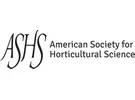In a new study conducted at Utah State University, researchers have discovered that elevated copper levels in hydroponic and peat-based media could hold the key to disease suppression in lettuce and tomato cultivation. The findings reveal concentration thresholds that could revolutionize disease management practices in agriculture.
Copper (Cu) is crucial for plant health due to its roles in various physiological processes such as electron transport, lignin synthesis, and protein cofactor functions. While most field soils provide adequate copper levels for plant growth, greenhouse fertilizers typically include it at micronutrient levels. Determining the optimal copper concentration in fertilizer solution can be achieved through a mass-balance approach, multiplying a desired leaf tissue concentration (typically 10 mg⋅kg–1 Cu) by estimated water-use efficiency (3 g of dry biomass per liter of water transpired). This calculation yields a minimum copper concentration of 0.5 μM (0.03 ppm). However, many commercial fertilizers contain up to 2 μM (0.125 ppm) copper to ensure bioavailability, especially in the presence of organic substances.
Soilless media often contains high levels of organic matter (OM) from coco coir, peat, pine bark, and/or sawdust. Organic matter has a uniquely high adsorption capacity for Cu. The acidic side chains in OM are rich in carboxylic and phenolic functional groups with negative charges that have a high affinity to adsorb Cu. Leaf curling and chlorotic and necrotic leaf margins in young tissue are common in Cu-deficient plants, which leads to impaired growth. Copper deficiency also restricts enzymatic activity and the efficiency of photosystem II.
An excessive Cu concentration in the root zone can be toxic to plants by overwhelming transporters that guard against excessive Cu uptake. Plants have evolved specific Cu-binding chaperone proteins that guide Cu to transport electrons within mitochondria and chloroplasts. Excess Cu is free within plant tissues and catalyzes the formation of reactive oxygen species. This leads to oxidative stress that damages proteins, lipids, and DNA. Common toxicity symptoms in most plants include brown root tips, root dieback, and stunted plant growth.
The toxicity threshold for elevated Cu is dependent on species, substrate type, and chelation. Copper toxicity thresholds were 100-fold less in deep-flow hydroponics than in peat-based media. Concentrations greater than 4 to 8 μM began to suppress growth in hydroponics. Copper chelated with EDTA increased bioavailability in peat-based media, but tomato was tolerant of high Cu in the peat-based media regardless of chelation. An elevated Cu concentration in the root zone has the potential to suppress fungal and fungal-like infections.
As the agricultural industry embraces advancements in science and technology, studies like this underscore the importance of interdisciplinary collaboration and research-driven solutions. By harnessing the power of copper, farmers can cultivate healthier, more resilient crops while promoting sustainable farming practices for years to come.
Read the full article on the ASHS HortScience electronic journal website at: https://doi.org/10.21273/HORTSCI17048-22

 American Society for Horticultural Science (ASHS)
American Society for Horticultural Science (ASHS)